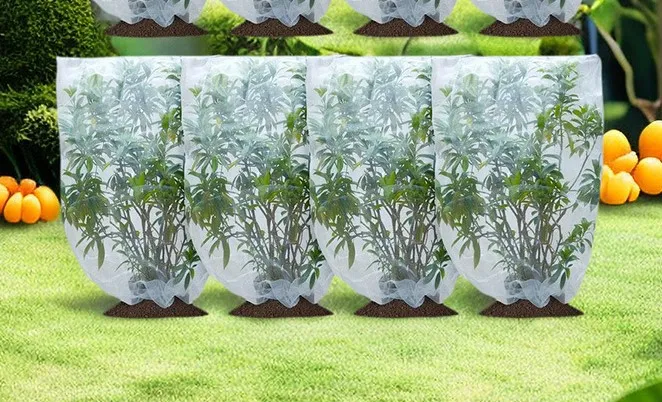-
 Afrikaans
Afrikaans -
 Albanian
Albanian -
 Amharic
Amharic -
 Arabic
Arabic -
 Armenian
Armenian -
 Azerbaijani
Azerbaijani -
 Basque
Basque -
 Belarusian
Belarusian -
 Bengali
Bengali -
 Bosnian
Bosnian -
 Bulgarian
Bulgarian -
 Catalan
Catalan -
 Cebuano
Cebuano -
 China
China -
 Corsican
Corsican -
 Croatian
Croatian -
 Czech
Czech -
 Danish
Danish -
 Dutch
Dutch -
 English
English -
 Esperanto
Esperanto -
 Estonian
Estonian -
 Finnish
Finnish -
 French
French -
 Frisian
Frisian -
 Galician
Galician -
 Georgian
Georgian -
 German
German -
 Greek
Greek -
 Gujarati
Gujarati -
 Haitian Creole
Haitian Creole -
 hausa
hausa -
 hawaiian
hawaiian -
 Hebrew
Hebrew -
 Hindi
Hindi -
 Miao
Miao -
 Hungarian
Hungarian -
 Icelandic
Icelandic -
 igbo
igbo -
 Indonesian
Indonesian -
 irish
irish -
 Italian
Italian -
 Japanese
Japanese -
 Javanese
Javanese -
 Kannada
Kannada -
 kazakh
kazakh -
 Khmer
Khmer -
 Rwandese
Rwandese -
 Korean
Korean -
 Kurdish
Kurdish -
 Kyrgyz
Kyrgyz -
 Lao
Lao -
 Latin
Latin -
 Latvian
Latvian -
 Lithuanian
Lithuanian -
 Luxembourgish
Luxembourgish -
 Macedonian
Macedonian -
 Malgashi
Malgashi -
 Malay
Malay -
 Malayalam
Malayalam -
 Maltese
Maltese -
 Maori
Maori -
 Marathi
Marathi -
 Mongolian
Mongolian -
 Myanmar
Myanmar -
 Nepali
Nepali -
 Norwegian
Norwegian -
 Norwegian
Norwegian -
 Occitan
Occitan -
 Pashto
Pashto -
 Persian
Persian -
 Polish
Polish -
 Portuguese
Portuguese -
 Punjabi
Punjabi -
 Romanian
Romanian -
 Russian
Russian -
 Samoan
Samoan -
 Scottish Gaelic
Scottish Gaelic -
 Serbian
Serbian -
 Sesotho
Sesotho -
 Shona
Shona -
 Sindhi
Sindhi -
 Sinhala
Sinhala -
 Slovak
Slovak -
 Slovenian
Slovenian -
 Somali
Somali -
 Spanish
Spanish -
 Sundanese
Sundanese -
 Swahili
Swahili -
 Swedish
Swedish -
 Tagalog
Tagalog -
 Tajik
Tajik -
 Tamil
Tamil -
 Tatar
Tatar -
 Telugu
Telugu -
 Thai
Thai -
 Turkish
Turkish -
 Turkmen
Turkmen -
 Ukrainian
Ukrainian -
 Urdu
Urdu -
 Uighur
Uighur -
 Uzbek
Uzbek -
 Vietnamese
Vietnamese -
 Welsh
Welsh -
 Bantu
Bantu -
 Yiddish
Yiddish -
 Yoruba
Yoruba -
 Zulu
Zulu
Exploring the Benefits of Bug Netting Fabric for Outdoor Protection
Understanding Bug Netting Fabric A Comprehensive Overview
In an age where the great outdoors beckons adventure, the need for effective protection against pests is paramount. One innovative solution that has emerged in recent years is bug netting fabric. This material serves as a barrier between outdoor enthusiasts and pesky insects, making it an essential item for camping, hiking, and other outdoor activities.
What is Bug Netting Fabric?
Bug netting fabric is a lightweight, breathable textile designed to keep insects at bay while allowing airflow and visibility. Typically crafted from materials like nylon or polyester, this fabric is tightly woven to create a mesh that prevents bugs such as mosquitoes, gnats, and flies from penetrating. Its design not only provides protection but also ensures comfort by allowing cool breezes to circulate, which is essential during hot summer months.
The Benefits of Using Bug Netting Fabric
1. Insect Protection The primary function of bug netting fabric is, of course, to protect individuals from insect bites. This is particularly important in areas where insect-borne diseases, such as Lyme disease or West Nile virus, are a concern. By using bug netting, outdoor enthusiasts can significantly reduce their risk of exposure to these harmful insects.
2. Versatility Bug netting fabric comes in various forms, including tents, hammocks, and standalone screens. This versatility allows users to select the best option for their specific needs. Whether you’re sleeping under the stars, lounging in a hammock, or setting up a cooking area, bug netting can provide peace of mind.
3. Lightweight and Portable A significant advantage of bug netting fabric is its lightweight nature. Most options are easy to pack, making them ideal for camping trips and long hikes. This portability ensures that outdoor lovers can enjoy their adventures without unnecessary bulk.
4. Durability While lightweight, many bug netting fabrics are also highly durable. They can withstand the rigors of outdoor use, resisting tearing and fraying caused by rough terrain or repeated setup and takedown. This durability ensures that users can rely on their bug netting for multiple trips, offering good value for the investment.
bug netting fabric

5. Eco-Friendly Options As environmental consciousness grows, many manufacturers are offering eco-friendly bug netting fabrics made from sustainable materials. These options appeal to environmentally aware consumers who wish to minimize their ecological footprint while still enjoying the comforts of outdoor living.
How to Choose the Right Bug Netting Fabric
When selecting bug netting fabric, consider the following factors
- Mesh Size The smaller the mesh, the better the protection against tiny insects. However, smaller mesh can reduce airflow, so it’s essential to find a balance based on your specific needs.
- Material Evaluate the material based on weight, durability, and breathability. Nylon is often strong and lightweight, while polyester can provide additional UV resistance.
- Application Determine how you will use the bug netting. For sleeping, a tent or hammock with an integrated bug net may be best. For cooking or lounging, a standalone screen may be more suitable.
Conclusion
In summary, bug netting fabric is an invaluable tool for anyone who loves spending time outdoors. Its protective qualities, versatility, and lightweight design make it a must-have for campers, hikers, and adventurers alike. By understanding the benefits and selecting the right type for your needs, you can enjoy nature without the nuisance of pesky bugs. Embrace the great outdoors with the confidence that bug netting fabric provides, allowing you to focus on the beauty of your surroundings rather than the insects that may try to intrude.
-
Shipping Plastic Bags for Every NeedNewsJul.24,2025
-
Safety Netting: Your Shield in ConstructionNewsJul.24,2025
-
Plastic Mesh Netting for Everyday UseNewsJul.24,2025
-
Nylon Netting for Every UseNewsJul.24,2025
-
Mesh Breeder Box for Fish TanksNewsJul.24,2025
-
Expanded Steel Mesh Offers Durable VersatilityNewsJul.24,2025











